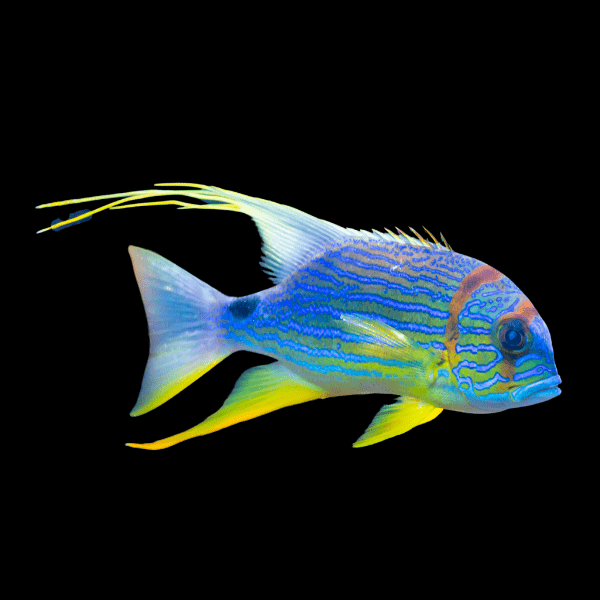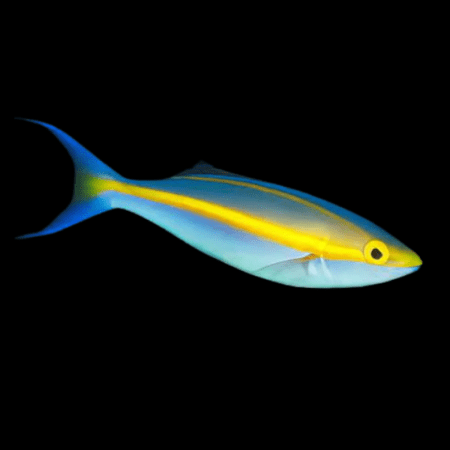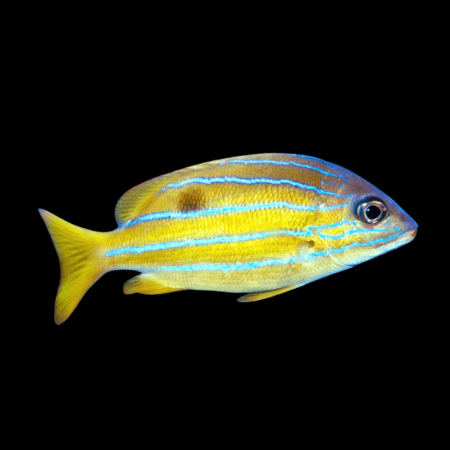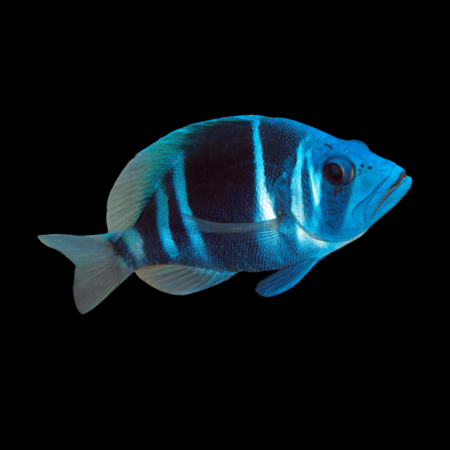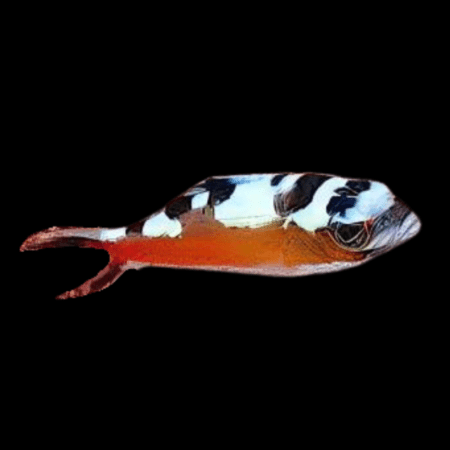Description
Long Fin Snapper Symphoricthys Spilurus
Overview
The Long Fin Snapper, known scientifically as Symphoricarpos spilurus, is a stunning marine fish that captures the attention of aquarists with its elongated fins and vibrant coloration. This species is not only admired for its aesthetic appeal but also for its unique behavior in the aquatic environment.
Origin
Native to the coral reefs of the Western Pacific Ocean, the Long Fin Snapper thrives in the diverse and rich ecosystems found in this region. It is often found swimming in schools around coral formations and reef slopes, where it can find shelter and food.
Feeding
As a carnivorous species, the Long Fin Snapper’s diet in the wild consists mainly of small fish and crustaceans. In the aquarium, they should be fed a variety of high-quality marine-based foods, including frozen and live offerings, to ensure their nutritional needs are met. Regular feedings will promote vibrant colors and good health.
Tank Mates
When considering tank mates, it’s essential to pair the Long Fin Snapper with species that are peaceful to moderately aggressive, to maintain a harmonious aquarium. Suitable companions include larger reef-safe fish and invertebrates. Avoid housing with very small or overly aggressive species that may provoke or harm the snapper.
Aggression
The Long Fin Snapper exhibits a relatively peaceful demeanor towards most tank mates. However, it may show territorial behavior towards its own kind or similar-looking species. Providing ample space and hiding spots can help minimize potential aggression.
Experience Level
Caring for a Long Fin Snapper requires a moderate level of experience. Aquarists should be familiar with the specific needs of marine fish and the maintenance of a saltwater aquarium, including water quality management and dietary requirements.
Water Parameters
- Temperature: 75°F to 82°F (24°C to 28°C)
- Salinity: 1.020-1.025 SG
- pH: 8.1-8.4
- Alkalinity: 8-12 dKH
It’s crucial to maintain stable water conditions to keep your Long Fin Snapper healthy and thriving. Regular water changes, along with monitoring of water parameters, will ensure the best environment for your fish.
